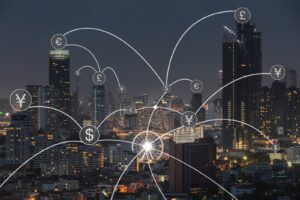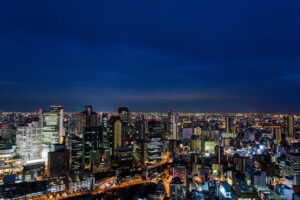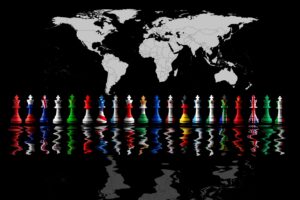How Can the World Bank Better Support the Shared Debt, Climate, and Development Financing Challenges Facing Caribbean SIDS?
Gender and Climate: Challenges for Multilateral Banking in Latin America and the Caribbean

What Does It Mean for Bilateral Development Agencies to Be Effective in a Changing Development Landscape?

Looking Back, Looking Ahead: Trends in US Multilateral Funding and What Trump’s Second Term Could Mean for Future Spending
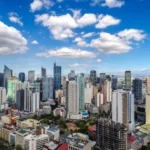
Southern MDBs: More of the Same?
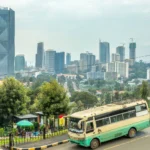
Southern MDBs: A Multilateral Solution for South-South Cooperation

Are Multilateral Development Banks Working as a System in Fragile and Conflict-Affected Situations?

IDA Prevails, Others Flail—and What Recent Replenishments Portend for 2025
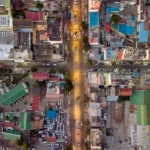
The Case for Local Currency Loans: How IDA Could Help Borrowers Reduce Vulnerability to Debt Crises
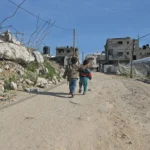
Multilateral Development Banks in Fragile and Conflict-Affected Situations: Overview of Key Policy, Financial, and Operational Issues
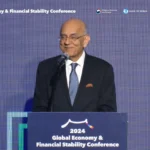
Development Cooperation in a Contested World
Leveraging the FfD4 Preparatory Process to Remove Barriers to Channelling Special Drawing Rights to Multilateral Development Banks
How can Multilateral Development Banks Better Support Green-energy transitition in Pakistan?
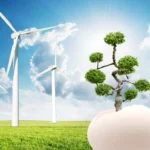
Green Energy Transition in South Africa: The Role of MDBs

Green Energy Transition in Pakistan: A Path to Sustainable Development
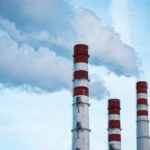
The $300 Billion COP-Out: And Where We Go from Here
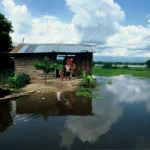
The Next Disaster Is Coming. Where Is the Pre-Arranged Financing?

Our Take on the IDA 21 Draft Replenishment Document
Multilateral development banks and the New Collective Quantified Goal: will they rise to the challenge?

Development Banks and the Green Transition – Episode 5
The Biden Administration’s Development Agenda: High Hopes Versus Harsh Realities
A Common Thread for Scaling Development Finance: Transparency
Development Banks and the Green Transition – Episode 4
Multilateral Development Bank Reform: How Can Multilateral Development Banks Better Support Green-Energy Transitions and Financing Requirements in the Global South? The Case of South Africa
Multilateral Development Bank (MDB) Reform: How can MDBs Better Support Green Energy Transitions and Financing Requirements in the Global South?
How can MDBs better support green energy transition in Pakistan?
Development Banks and the Green Transition – Episode 3
The case for an Indo-Pacific Economic Resilience Bank
Development Banks and the Green Transition – Episode 2
Five Steps Multilateral Development Banks Can Take Now to Enable At-risk Financing for Pandemics
Private Sector Mobilization: Turning a Pipe Dream into Reality
The G20 Independent Expert Group Report Card on Strengthening Multilateral Development Banks: An Incomplete Grade
Without Action, IDA21 Will Become a Missed Opportunity for Women and Children in Crisis-Affected Areas
Latin America’s positioning for cop 16 of the convention on biological diversity to be held in Colombia
Allocate SDRs Directly to Multilateral Development Banks

Multilateral Development Bank Reform Tracker
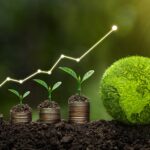
Development Banks in the Green Transition – podcast ep 1
Transforming our understanding of what works to mobilise private investors
Reforming MDBs: we have the solutions, now we need sustained leadership
The Private Sector and Development: Cataloguing A Quarter Century of Mobilization Unscaled
Twelve Steps to Institutional Reform: Why and How the Capital Adequacy Report Had Impact
Blended Finance Best Practice: case studies and lessons learned
Are the Bretton Woods Institutions Ready for Africa’s Oil Shock?
A Multilateral Fund to Grow Green Firms: An Idea Whose Time Has Come?
IDA Is and Must Continue to Be the Standard Setter for Responsible Lending
Investing for resilience: A panel discussion with Asian Infrastructure Investment Bank President Jin Liqun’

Domestic Revenue Mobilization for Sustainable Development and the Contribution of IDA-20
Domestic Revenue Mobilization for Sustainable Development in Sub-Saharan Africa and the contribution of IDA-20

Domestic Revenue Mobilisation (DRM) for Sustainable Development in Sub-Saharan Africa and the Contribution of IDA-20
Domestic Revenue Mobilisation for Sustainable Development in the Four East African Countries
Methane Abatement in Africa: The role of Multilateral Development Banks
Local currency financing and multilateral development banks: A case for IDA leadership
Bretton Woods in a New World: Navigating the New Economic Landscape
In conversation with the president of the World Bank Group Ajay Banga
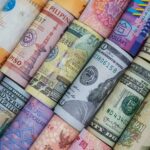
International Finance Reforms: Accelerating Investment and Driving Climate-Positive Green Industrialization in Africa
The World Bank’s IDA Is a Vital Lifeline for Pacific Islands and Other Small States
Innovative Deals in Development Finance: Originate to Demonstrate (O2D)
The Climate Reform Agenda: How China Enables and Undermines U.S. Leadership at the World Bank
Addressing cross-border challenges: what should multilateral development banks do differently?

Making IDA21 Work for Africa
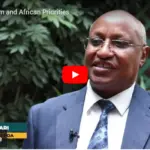
African Priorities for MDB Reform
Transforming the World Bank’s Approach to Knowledge: From Rhetoric to Reality
ABCs of the IFIs: Understanding the World Bank’s IDA21 Replenishment
Will the Window for Host Communities and Refugees Survive “SimplifIDA”?
The Gender Agenda in IDA21: Less Is Not More
The US, China, and MDB Reform: The Case for Shared Interests
What Explains the Gender Pay Gap at the World Bank Group? Reactions to the 2023 Paper By Das and Joubert
Financing the SDGs: An Emerging Bretton Woods II Model
Does the IDA Private Sector Window Deserve More Funding? Only with Major Changes
Why and How Multilateral Development Banks Support Improved Outcomes for Economic Migrants and Refugees
Can IDA Break the 100-Billion-Dollar Mark? The Math Is Difficult, but Not Impossible

Multilateral Development Banks for Global Public Goods – Good Practices
Podcast: How can we make development finance work for everyone?
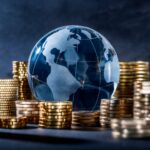
The reform of the global financial architecture: Toward a System that Delivers for the South
Podcast: Devex @ World Bank-IMF: The skinny on World Bank plans to harness private capital
Announcing Season 2 of Brettonomics with Nancy Jacklin: A BWC Podcast

Are MDBs Actually Implementing Reforms?
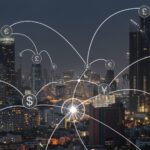
Implementing MDB Reforms: A Stocktake
Closing Data Gaps that Obstruct Solutions to Mobilizing Private Finance for SDGs
Spring Meetings 2024: What We’re Watching
Investing in development works

Podcast: Think Change episode 44: tackling debt, transforming economies – why is the IDA replenishment so urgent?
Leveraging Domestic Revenues for Sustainable Development
Loan Repayment in Poor Countries: Myth-Busting New Evidence from MDBs and DFIs
Replenishing the Asian Development Bank in the Pacific
How likely are multilateral development banks to need callable capital? Implications for risk frameworks and lending capacity
Risky Business: Renewing the Private Sector Reform Agenda at the World Bank

International Finance Reforms: Collaborative Actions for Greater Impact in Africa
A multilateral bank for the Indo-Pacific?
One Small Step for the AfDB, One Giant Leap for all MDBs
Fossil fuel phase-out: development banks need to play a bigger role
How Do We Know IDA Works?

Financing the Future: The Role of a Global Green Bank in Sustainable Development
Don’t Innovate IDA (Unless You Have To)
The 2024-2025 Replenishment Traffic Jam: Are We Headed for a Pileup?

A Preview of Upcoming Research on MDB Reform from Think Tanks Across the Globe
Has the IDA PSW Increased IFC Investments in IDA Countries?
An African Agenda for World Bank Group Reform
How Multilateral Development Banks Measure Their Institutional Success
The World Bank and the International Monetary Fund Should Do Less to Achieve More
Building Blocks for an Enhanced Global Public Goods Window at the World Bank
Priorities for the World Bank Evolution Roadmap: Volume II
An SDR-Linked Bond Can Strengthen the Finances of the World Bank Group
Remarks from a Panel Discussion on Strengthening Multilateral Development Banks (MDBs) to Address Shared Challenges of the 21st Century
The distinction between middle-income (MICs) and low-income countries (LICs) is not the most useful when approaching development issues. A number of MICs have very high levels of inequality and large populations, meaning that a significant share of the world’s poor and vulnerable live in MICs.
Warming or Cooling on World Bank Climate Finance: What Drives Country Demand?
The climate agenda has been a dominant feature of World Bank reform efforts, with President Banga aiming to both mobilize new resources and increase the proportion of total funding for climate-related projects. The stakes are high: greenhouse gas (GHG) emissions in many borrowing countries are elevated and rising, dimming prospects for meeting the 2030 Paris...
Good COP/Bad COP: It’s Not Easy Being Green
The World Bank offered up several new climate commitments at COP, the big UN climate conference, including that 45 percent of its annual financing will be devoted to climate-related projects starting in fiscal year 2025 (which begins next July). The Bank estimates that this will “put to work” more than $40 billion. The target is a...
Debt, exploitation and trafficking of labour migrants
How Did the UK’s Assessments of Multilateral Value for Money Affect Aid Allocations?
Leveraging External Finance for Africa’s Green Industrialization
Technology and Cheap Finance in the Global Fight against Climate Change
The IMF and the IDB Are Talking Up Debt-for-Nature Swaps at COP28. Here’s Why We’re Skeptical.
What should COP28 urge from multilateral development banks and their shareholders?
How can the new climate finance goal learn from past mistakes?
Scaling Private Capital Mobilization
GEMs 3.0 From minimal disclosure to data driven asset allocation at scale
CGD Podcast: Decarbonization, MDB Reform, and the Private Sector with Ahmed Saeed
World Bank Reform: Landing as a Tiger or As a Housecat?
Is IDA Equipped for Another Debt Shock?
Main Takeaways on Debt from the Annual Meetings
Amplifying Africa’s Voice: The role of African institutions in global financial reforms
Private Investors Work on Impact Disclosure Guidelines: Request for Input
Realizing parallel investments in Africa’s green industrialization

Strengthening Multilateral Development Banks: A Response to Critics
What’s Not to Like About the IDA Private Sector Window
Shareholder-led Multilateral Development Bank reforms: Catalyzing private finance towards African climate goals
Who Gets World Bank Climate Money? An Exploration of Adaptation Financing to Lower-Income Countries

Anchoring the reforms of the international financial system at the regional and national levels
Empty Words, Empty Wallets: The G20’s Broken Promise on SDR Recycling
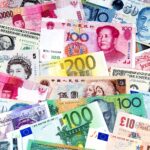
Quota reform is an opportunity for the IMF to restore its legitimacy

Development Futures: Reforming the Multilateral Development Banks
Marrakech Meeting on SDRs Rechanneling: Accelerating Development Finance Through Multilateral Development Banks
Changing the World Bank’s Incentives from Inputs to Outcomes
Where are the political champions to coordinate transformative change in the international financial system?
Annual Meetings, Perennial Challenges

Marrakech Framework: An African Agenda for Global Financial Architecture
Fixing Project Bureaucracy at the World Bank
The Triple Agenda: A Roadmap for Better, Bolder and Bigger MDBs
From MDB Evolution to Transformation: Volume 2 of the IEG Report
MIGA: The Little Engine That Should
The US Failed the World in Morocco
One year on, the World Bank must focus on how to implement its Evolution Roadmap
Will Countries Still Transition from Gavi, the Global Fund, and the World Bank (IDA) in the Post-COVID Era?
State of the Global Economy and its Implication for Emerging Market Economies
Introducing the MDB Reform Tracker
The Annual Meetings: Time to Walk the Talk on Private Sector Mobilisation for Climate
The Evolution Roadmap Versus the Forward Look: A Tale of Two Visions for the World Bank Group
What We’re Watching at the Annual Meetings
Multilateral Development Bank Reform Tracker
Podcast: Development Futures: Towards a more inclusive sovereign debt architecture
International financial institutions’ reform: where do we stand?
Maximising the developmental value of MDB callable capital: Preliminary findings

Think Change episode 31: what do borrowing countries think of MDB reform?
World Bank and the potential of CAF reforms
The ongoing reform of the World Bank
“The World Is On Fire”: Larry Summers on the Pressing Need for New Global Financing through MDB Reform
Podcast: Development Futures: Revitalising the Green Climate Fund
David A. Morse Lecture With Ajay Banga
The Politics of an IBRD Capital Increase: Might IDA Make it Better?
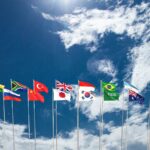
MDBs Can Drive Transformative Change—Now the G20 Must Inject Urgency and Sustain its Support
Revitalising the Green Climate Fund
The G20 and the MDBs: Diss and Dissonance

How can MDBs better meet today’s challenges? What global think tanks are watching
Who the Next President of the EIB Is Matters for Global Development
A new South is taking the wheel

Don’t Reorganize the (Whole) World Bank to Fight Climate Change

Public Development Banks and Philanthropies: No Longer Strangers

The Administration’s World Bank Request: Bullish in a China Shop
Proposal for a Global Public Goods Financing Facility at the World Bank
Mining for GEMs
Good Practices in the Provision of Global Public Goods: How multilateral development banks build on global public goods in their operations

Three Questions About the World Bank’s New Portfolio Guarantee Program
CGD Podcast: Accelerating MDB Reform with Stephanie von Friedeburg
You Can’t Have It Both Ways: Why the MDB System Cannot Deliver Both Development and Global Public Goods Well
What Could World Bank Reforms Mean for Climate-Vulnerable Small Island Developing States?
The Resilience and Sustainability Trust: An Assessment of the First Steps Forward
Why is implementing the UK’s Small Island Developing States (SIDS) strategy such an urgent priority?
Mobilizing Private Investment in Climate Solutions: De-risking Strategies of Multilateral Development Banks
Understanding “loss and damage” from climate change across the Indo-Pacific

Report of the Independent Experts Group to the G20: Strengthening multilateral development banks – The Triple Agenda: Vol 1
Did India’s G20 Finance Ministerial Move the Needle on MDB Reform?

An Ambitious IDA for a Decade of Crisis
The ABCs of the IFIs: Understanding the World Bank Group Evolution

Perspectives of the Global South on MDB Reform Conference
Scrapping IMF surcharges is key to cutting debt burden on distressed nations

More Bang for Its Buck: The World Bank Has to Modernize Its Approach To Enable Private Sector Investment
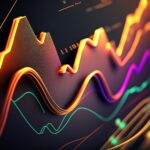
Paris Climate Summit: A New Global Financing Pact Takes Shape
MDBs Need Major Reforms, Not Just More Funding, to Address Climate and Development Finance Challenges
Ten Times Bigger? Why the Impact of Climate Finance May Be Greater Than We Think

Climate-smart reform of multilateral development banks: priorities for the G20
Replenishing the Green Climate Fund
The World Bank Promises to Revamp Its Climate Finance Tracking. We Have Some Recommendations.
Key Takeaways from the Paris Declaration on Multilateral Development Banks
The Interlocking Challenges of Climate Change and Poverty | The Development Podcast

After the Paris Summit: A global financial architecture that works for Africa
Unveiling the True Power of the President of the World Bank
Did Paris Call It Quits on Billions to Trillions?
Summary of public comments received by the G20 Expert Group on Strengthening Multilateral Development Banks (MDBs)
A loss and damage fund: two big challenges
What Would the Ideal Development and Climate MDB Look Like?

Paris Finance Summit: how to build a coalition for system change?
A Summit Against a Backdrop of Division
Why Taxing Emissions is a Must for Climate and Development at Macron’s Summit
Debt Suspension Clauses to the Rescue?
A Quick and Easy Way to Subsidize the PRGT
Summit for a New Global Financing Pact: what conditions for success?
What Counts as Climate? Preliminary Evidence from the World Bank’s Climate Portfolio

Lessons From Belt and Road for Development Finance Institutions
Climate shocks and debt service suspension in low and middle-income countries: Rethinking the climate-debt nexus through facts an numbers

World Bank Reform: Windows, Windows Everywhere, and We Have Views
Reformed MDBs for a Just Energy Transition in Emerging Economies
Institutional Drift: Multipolarity, Bretton Woods, and Parallel Multilateral Development Banks
A Proposed ‘Brady Plan 2.0’ to Avert Sovereign Debt Crises in the Developing World
Multilateral Development Banks for Global Public Goods

Debt Dynamics and Financial Stability in Africa
Maximising the developmental value of MDB callable capital: a new research agenda
The World Bank Should Harness Evidence to Deliver Greater Impact
Hidden GEMs!

IDA’s New Fundraising Campaign: An Early Test for World Bank President Banga
Testimony on International Financial Institutions in an Era of Great Power Competition
Declaring a Hollow Victory on SDRs Would Further Undermine G20 Credibility

A Larger World Bank Group for a More Integrated Sustainable Development Agenda: Constraints and the Way Out
A GPG Window at the World Bank: With its Own Governance
Now Is the Time to Recycle SDRs through the African Development Bank
Recommendations for US treasury and MDBs in developing evolution roadmaps: From fragility to resilience
The time is now: what the World Bank’s (R)evolution Roadmap should look like
The future of the World Bank: In conversation with Vice President for East Asia and Pacific, Manuela V. Ferro
Mustering the private sector for development and climate in the Global South – Is it realistic?
IF-CAP Recap: The Asian Development Bank’s Big Climate Finance Bet
Gender Integration in Multilateral Development Banks’ COVID-19 Response Efforts
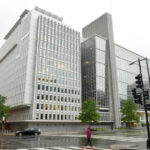
Reinventing Multilateral Development Banks
Open letter to new World Bank President Ajay Banga: be the catalyst for reform the World Bank so urgently needs
Aligning Incentives for Climate Action
Spring Meetings 2023: Toward a New Era – podcast
African Finance Ministers demand action on Global Financial Architecture Reform
Multilateral development bank reform can – and must – benefit both low- and middle-income countries
The trillion-dollar bank: Making IBRD fit for purpose in the 21st century
A New World Bank Agenda in the Era of Climate Change
Evolution of the World Bank Group – A Report to Governors
Development finance cooperation amidst great power competition: what role for the World Bank?
What the World Bank’s Country Climate and Development Reports Tell Us About the Debt-Climate Nexus in Low-income Countries
El mundo no necesita otra institución más contra el cambio climático
Los fondos de mitigación y adaptación al calentamiento global podrían funcionar canalizados por una sola entidad independiente, que controle la asignación de las inversiones y evalúe el impacto.
What Does World Bank Success Look Like?
Bitesize Business Breakfast: More companies in RAK’s Economic Zone
RAK Economic Zone saw the number of new companies signing up more than double in Q1. Ramy Jallad joined us to explain what's driving up the numbers. Plus, as the UAE Minister of State for Finance Mohamed Al Hussaini heads to Washington for the IMF Spring Meeting, we ask Masood Ahmed about the UAE's role...
What Does World Bank Success Look Like?
On the face of it, the case for a general capital increase for the World Bank should be obvious and urgent in our age of the polycrisis. It is a very efficient way to support an increase in development and climate lending by an order of magnitude. A $20 billion paid-in capital increase would support...
The Future of IDA: How Does Gender Equality Factor In?
Among IDA’s key substantive priorities is gender and development—which sits alongside human capital; fragility, conflict, and violence; jobs and economic transformation; and climate change as an overarching special theme. But despite IDA’s inclusion of gender equality as a theme beginning in 2016, it remains at the bottom of IDA-borrowing government officials’ own priorities. What reasons...
For the World Bank to Address Global Challenges, It Needs to Address Trade-Offs Head On
Bigger, but also better: why MDB reform must go further
An Innovative IFI Operating Model for the 21st Century
This paper lays out key products and processes that need to be introduced, reformed, and/or scaled to effectively deploy existing and new volumes of climate finance. The paper focuses on the multilateral development banks (MDBs), notwithstanding the critical roles of other institutions such as the International Monetary Fund (IMF) and other public development banks (PDBs)....
When It Comes to World Bank Reform, April Will Be Disappointing. But that Shouldn’t Be the End of the Story.
Reform of the World Bank is in the eye of the beholder—not just how it’s going, but even what it is. With so many issues still to work out, next week's Spring Meetings are likely to be disappointing for those hoping for swift movement. But there's still room for ambition and optimism in the longer...
The Road to a Better World Bank Starts with a Commitment to IDA
IDA has emerged as the largest financing arm of the World Bank Group in the last few years, and demand remains high. But IDA has not featured as prominently in the World Bank reform and roadmap conversations as IBRD. The Spring Meetings are an opportunity to change that.
The Spring Meetings Should Launch a Climate-Dedicated IBRD Capital Increase
MDB Reform: What Global Think Tanks Are Watching at This Year’s Spring Meetings
Accelerating MDB Reform to Address Today’s Global Challenges
Where has the money come from to finance rising climate ambition?
The World Bank’s Future Rests on Its Next Leader
Masood Ahmed' Guest commentary on Barron's
A Dual Evidence Agenda: Delivering Greater Impact for Development and Global Challenges
Reforming the World Bank to Play a Critical Role in Addressing Climate Change
World Bank Investment Projects Aren’t Designed for Crises
Before Throwing Grant Money at Global Public Goods, Let’s Figure Out if We Know How to Pitch
Concessional Finance for Addressing Climate Change: A System Ripe for Reform
Concessional Climate Finance: Is the MDB Architecture Working?
From Bretton Woods to Bridgetown? Scaling up the World Bank
Funding Hybrid Capital at the AfDB is the Best Deal for SDR Donors
If You Want Clients to Borrow from the World Bank for Net Zero Investments, Make It Easier
More than meets the eye? Assessing MDBs’ contribution to tackling global challenges
The World Bank Must ‘Walk the Talk’ on Gender Equality
Yes, MDB Shareholders Can Act Now: Six Very Feasible Near-Term Decisions
The Next Pandemic: If We Can’t Respond, We’re Not Prepared
Amplifying African Voices: Reforming Multilateral Development Banks

Do Clients Want the World Bank to Focus on Climate?
Months of innovative work by AfDB staff have resulted in an attractive SDR recycling scheme that overcomes a major hurdle by successfully embodying the reserve asset characteristic. And it will allow leveraging SDRs to multiply their lending power 3-4 times. Now politicians have to step up and commit their SDRs. And Europeans need to show...

How Emerging Economies Are Reshaping the International Financial System
Whilst the war instigated by Russia, and rising competitions with China, could suggest a return to a cold-war-esque bipolar world, the spread of economic growth and prosperity mean the economic and financial influence is much-wider spread. The “emerging” economies are significantly stepping up their contribution to development and their choices on whether and how...
What the Biden Administration Should Be Looking for in a World Bank President
With David Malpass’s announcement on Wednesday that he will step down as president of the World Bank, the Biden Administration is faced with the choice of a nominee to run the institution at a particularly challenging time.
Aftermath of War in Europe The West VS. the Global South?
This publication provides an insight into the lens through which countries of the Global South view the current period of successive crises, brought about by an ongoing global pandemic and a war in Europe.
How Multilateral Development Banks Can Use Policy-Based Financing to Support Climate-Resilient Economies
The Expansion of the BRICS in a World of Shifting Power Dynamics
Join us on this exploration of the BRICS in a world of shifting power dynamics, and gain a deeper understanding of one of the most important economic and political blocs in the world today.
A Valentine’s Day Gift for the AfDB’s Campaign for SDR Recycling—But Now We Need More Heart
Months of innovative work by AfDB staff have resulted in an attractive SDR recycling scheme that overcomes a major hurdle by successfully embodying the reserve asset characteristic. And it will allow leveraging SDRs to multiply their lending power 3-4 times. Now politicians have to step up and commit their SDRs. And Europeans need to show...
Is the European Investment Bank Finally Transforming Itself Into a Development Bank?
Despite increased capital 2022 was a particularly risk-averse year for EIB Global. On paper at least, the bank intends to increase its risk profile and become a development bank. Whether that change materialises remains to be seen.

The World Bank Should Ramp Up Finance for Climate, But Not at the Cost of Development
The World Bank Group Evolution Roadmap makes three financing asks of donors and shareholders: capital for IBRD, continued support for IDA, and grants to support climate projects. I think donors and shareholders should support a capital increase and strengthen commitments to IDA. But they should not provide more grants to support climate activities at least...
Energy Trends and Outlook Through 2023: Surviving the Energy Crisis While Building a Greener Future
This Policy Brief explores five recent trends that are likely to shape the transformation of the energy system in 2023 and highlights clean technology challenges to accelerate the transition to a greener future.
A Bigger Mission Must Mean More Financial Ambition at the World Bank
The longer the World Bank’s biggest shareholders stay mum on the overall package of support, the higher the likelihood that we get more business as usual and more unconvincing fodder for summits and high-level meetings even while the Earth literally burns.
The World Needs a Green Bank
In this policy brief I propose a new approach to climate financing: the creation of an International Green Bank, which would be a global public-private partnership. This approach would make it easier to raise the $500 billion requested by the Bridgetown Initiative, because in addition to sovereign contributions, the Green Bank’s financing will include contributions to capital by...
Tapping the potential of borrower-led multilateral development banks
Evolving the World Bank’s Twin Goals
The World Bank management’s Evolution Roadmap suggests the institution is reconsidering its ‘twin goals’ mission statement of eradicating extreme poverty (ending $2.15 poverty by 2030) and boosting shared prosperity (raising the incomes of the bottom 40 percent in each country). It is reassuring that Bank management wants to keep the twin goals focused on consumption...
Climate Finance: How to move from the Trillions to the People?
What is missing from the World Bank’s Evolution Roadmap? Six priorities for management and shareholders
The World Bank Group’s Evolution Roadmap: More Work Needed
At the Annual meetings of the World Bank and IMF last year, shareholders asked the World Bank to come up with a set of proposals to evolve a larger role in climate and other global public goods. The Bank’s first response came pretty quick: by mid December, only a couple of months after the request,...
Transparency and World Bank Evolution
Late last year, the World Bank Group issued a roadmap on its potential evolution in response to shareholder pressure at this year’s Bank-Fund annual meetings. The roadmap document has been widely shared with member governments. As reported by Reuters and Devex on the basis of leaked copies, it proposes reforms to the World Bank Group’s...
Sailing On a Storming Sea: Policy Challenges For Developing Countries 2022-2025
The current bleak outlook for the world economy, with a likely recession in major economies, high inflation, rising interest rates, and slow productivity growth, will adversely emerging market and developing countries (EMDE) over the next few years.
The New Model IFC Still Isn’t a Good Deal for IDA Countries
The IFC isn’t finding more private sector projects to support in IDA countries even with the backing of both PSW financing and retained earnings used to hire more staff to look for projects. Absent actual projects to invest in, PSW resources are increasingly committed to regional and global facilities that don’t disburse. That doesn’t help...
AfDB’s new Room2Run highlights opportunities and questions about MDB risk transfer
Climate Diplomacy and the Global South
One aim of COP27 was to persuade countries to make commitments to reduce emissions and earmark resources for technologies to be transferred from industrialized states to less developed states. This year’s gathering is the first where “funding arrangements” for “loss and damage” were included on the agenda, to the displeasure of the US and European Union...
The World Bank Window for Host Communities and Refugees: Opportunities for Learning and Expansion in Africa and Beyond
The US-Africa Leaders Summit in Washington, DC presents an important opportunity to discuss the public good provided by African countries in hosting 7 million refugees. One critical tool that African and US officials should focus on and jointly advocate for is the World Bank’s Window for Host Communities and Refugees (WHR). Designed as an innovative...
MDBs for a Global Future: Centering Borrowing Country Perspectives
An effective transformation of the MDB system can’t happen from Washington alone—what emerging markets and low-income countries alike want from the MDB system will need to be front and center. To ensure borrower perspectives are a major part of the conversation, two finance ministers have agreed to contribute in-depth discussions of reform.
The Development Finance Agenda Must Adapt to Africa’s Reality
Hybrid Capital and SDRs for the Uninitiated
More than a year after the IMF general allocation of Special Drawing Rights (SDRs) and the G20 promise to recycle $100 billion of SDRs, how much has been achieved? And how will the recycled SDRs be used?
Amplifying Africa’s Voice – Global Financial Architecture, MDB Reform and Climate Finance

Are current climate initiatives unfair to developing nations?
Confronting the climate emergency with climate, trade and development policy in sync
What’s the state of play on Just Energy Transition Partnerships?
Multilateral development banks need a bolder vision and urgent reform to tackle the climate crisis
Providing climate finance in the context of a looming debt crisis
The “polycrisis” and global development finance: options and dilemmas
The Good, the Bad and the Urgent: MDB Climate Finance in 2021
Rightsizing the MDB System in the Polycrisis Era
For both rich and poor countries, the climate crisis is no longer looming. It is all around them. Yet, as thousands gather in Sharm el-Sheikh for COP27, scientists have just confirmed that we are nowhere near where we need to be on greenhouse gas emissions reductions.

Our Wish List for the World Bank’s Evolution Roadmap
The assignment is clear. During this year’s Annual Meetings of the IMF and World Bank, shareholders instructed the World Bank to develop a work program for its own evolution (“to identify gaps in the Bank’s current institutional and operational framework…”) by the end of the year. Secretary Yellen led the evolution charge, noting, “We do...
COP27: A Brief Account of Contemporary Climate Adaptation and Mitigation Policies, a View from the South
Following the consecutives shocks to the global economy caused by fossil fuels, the timing has never been better to melt the polarization around climate change politics and propose innovative solutions to surf the uncertainty and complexity of this intractable policy problem.
Amplifying Africa’s Voice in Reforming the Global Financial Architecture
A United Front: John Asafu-Adjaye on Africa at COP27
Climate Action for Africa at COP27

Bridging Green Infrastructure and Finance
The G20 Infrastructure Investors Dialogue estimated the volume of global infrastructure investment needed by 2040 to be $81 trillion, $53 trillion of which is needed in non- advanced countries (OECD 2020). The Dialogue projected a gap – in other words, a shortfall in relation to the investments foreseen today – of around $15 trillion worldwide,...
How to Finance Green Infrastructure
Mobilizing excess savings in advanced economies for much-needed investment in green infrastructure in emerging-market and developing economies will not be easy. But it is possible, if both the public and private sectors do their parts.
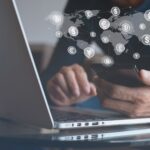
Is World Bank Lending a Hot Ticket in a Global Credit Crunch?
World Bank loan terms are becoming increasingly attractive as global interest rates soar. This is not because the Bank’s International Bank for Reconstruction and Development (IBRD) loans have gotten cheaper, but because the average emerging market’s (EM) borrowing costs have risen so much more dramatically than IBRD loan prices. Consu, the spread between an IBRD...
Partnerships for a just energy transition in the context of Africa-Europe relations: perspectives from South Africa, Nigeria and Senegal
It is Unfair to Push Poor Countries to Reach Zero Carbon Emissions too Early
we must shift the conversation from futuristic net-zero ambitions toward practical and equitable emissions trajectories. The rich and overall high emitters have to reduce emissions aggressively, while the low-emissions poor must lower their growth rate of emissions on a credible path toward zero.
Aligning Policy-Based Finance with the Paris Agreement
Financing Climate Change Adaptation and Mitigation in Developing Countries
This paper attempts to quantify the scale and possible composition of international financial assistance that might be required to help developing countries fulfil the commitments undertaken in COP26.

Reforming the World Bank and MDBs to Meet Shared Global Challenges
Last July, CGD hosted a meeting with other think tanks to exchange perspectives on the multilateral development bank (MDB) system. Participants at our meeting agreed to set out a shared “call to action” where we lay out ideas to evolve the World Bank.

IMF-World Bank meetings are the last stop before a coming economic storm
Global finance ministers need to act now in three key areas to prepare the groundwork for a coming global slowdown.
Operationalize the alignment of multilateral development banks with the 2030 Agenda

Multilateralism and Multipolarity

The climate agenda as the central axis of foreign policy in Latin America
Assessing the Asian Infrastructure Investment Bank
The Sovereignty of Developing Countries: The Challenge of Foreign Aid
Foreign aid has a well-established and significant role in international relations. The role of foreign aid in the repertoire of international development programs is extensively documented, with its goal being the promotion of human and economic development.
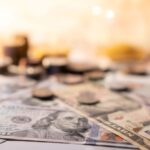
MDB Policy-Based Guarantees: Has Their Time Come?
https://www.cgdev.org/publication/mdb-policy-based-guarantees-has-their-time-come
A Dive into MDB Policy-Based Guarantees: Relevant but in Need of Reform?
Policy-based guarantees (PBGs) have long been a multilateral development bank (MDB) instrument in search of a purpose. PBGs—a credit enhancement for sovereign market borrowing—have been around for decades but their uptake has been limited. In most instances, they have proven remarkably effective in helping to reduce governments’ external financing costs and mobilize large volumes of...
Why Should You Care About MDB Capital Efficiency?
At the July G20 meeting of finance ministers and central bank governors, a panel of experts (of which I was one) presented their report on the capital adequacy of the MDBs. Why care? the answer, quite simply, is that hundreds of billions of dollars are at stake. As with any bank, small changes in the...
Threats without borders: Are we apt to cope with the challenges?
Quantitative Tightening and Capital Flows to Emerging Markets
In its May 15th meeting, the Federal Open Market Committee of the U.S. Federal Reserve (Fed) lifted its benchmark policy rate by 0.75% to 1.50%–1.75%, the biggest increase since 1994. In addition to hikes in basic interest rates, liquidity conditions in the US economy will also be affected by the shrinking of the Fed's balance...
Memo to Administrator Power: Five Recommendations for Better USAID Engagement with the World Bank and other MDBs
The World Bank and other multilateral development banks are historically underutilized assets when it comes to USAID’s development objectives across a wide range of sectors and initiatives. We offer instead a set of recommendations that USAID could implement largely within its own purview, or with a modest degree of cooperation from Treasury and State.
Climate Refugees: A Major Challenge of International Community and Africa
Given the lack of a specific legal regime for climate refugees, global and regional organizations have no de-facto mandate to assist these individuals, increasing their vulnerability and further complicating the evolution of international law.
A Bank for the World?
At a time when governments seem able to agree on very little, the consensus around the Bank’s need to scale up its engagement on climate and other global public goods is striking. But “scaling up ambition” is vague, and there remains a great deal of work to do to pin down what it means in...
A Bank for the World: Better Terms and Conditions for Global Public Goods
As one of the only truly global institutions, the World Bank is uniquely positioned to be the world’s premier source funding for global public goods. But despite its global coverage, the World Bank has never truly been oriented towards global challenges. Its mission has been defined primarily by individual developing country problems and priorities. This...
The Future of Work in Africa: Eight Opportunities for Development Finance Institutions
Replenishing Africa’s Development Fund: A Time for Ambition
he stakes are high for the African Development Fund (AfDF) as it kicks off its replenishment fundraising exercise this spring. Countries in sub-Saharan Africa (SSA) are still grappling with the health and economic fallout of the COVID-19 crisis, with over 30 million of their citizens pushed into poverty since the onset of pandemic.
Energy in a World in Transition: Challenges, Opportunities and Perspectives
An Open Letter to G7 Finance Ministers
How We Can Put SDRs to Work in the Fight Against Climate Change—The Multilateral Development Bank Option
Special Drawing Rights (SDRs) are sitting idle in many countries’ central banks. With a political push and some technical innovation, they can be put to good use at the multilateral development banks (MDBs) to accelerate the fight against climate change.
How We Can Put SDRs to Work in the Fight Against Climate Change—The Multilateral Development Bank Option
In the midst of a crisis, Special Drawing Rights (SDRs) are sitting idle in many countries’ central banks. With a political push and some technical innovation, they can be put to good use at the multilateral development banks (MDBs) to accelerate the fight against climate change.
Message to Donors: The African Development Fund Replenishment Needs Ambition
On the heels of last year’s landmark $93 billion replenishment of the World Bank’s IDA—and with the international community preoccupied with responding to Ukraine—the replenishment of the African Development Fund cannot be an afterthought.
Paving the Way for Greener Central Banks. Current Trends and Future Developments around the Globe
Climate change has quickly become one of the most pressing challenges of our society. Financial actors could play a key role in supporting and fostering a shift towards a low-carbon economy.

Country Platforms and Delivery of Global Public Goods
This paper discusses three potential requirements for country platforms to facilitate effective delivery of GPGs. We propose that existing country platforms be repurposed to coordinate the contribution of domestic and external stakeholders to GPG delivery efforts at the country level. For this proposed approach to be successful, an explicit link must be introduced between country-level...
How Could Country Platforms Facilitate the Delivery of Global Public Goods?
Ongoing and looming global crises such as the COVID-19 pandemic and climate change have brought renewed attention to the delivery of global public goods (GPGs)—goods that benefit the entire world and can only be provided through cooperation between countries, like public health, climate action, and peace and security. At the same time, it has become...
Lend or suspend? Maximising the impact of multilateral bank financing in the Covid-19 crisis
All hands on deck: how to scale up multilateral financing to face the Covid-19 crisis
A guide to multilateral development banks
The mandates and operations of multilateral development banks (MDBs) have evolved and expanded in recent decades. Many were created in the 1960s, during the period of decolonisation, while others came into being after the end of the Cold War to support reconstruction, development and regional integration.
Six recommendations for reforming multilateral development banks: an essay series
Providing global public goods: what role for the multilateral development banks?
Six proposals to strengthen the finances of multilateral development banks
More Insights
From the MDBs
The latest reform updates and announcements from the multilateral development banks.
View allIn the News
Weekly news round-up to keep you in the loop on the MDB reform agenda.
View the latest news